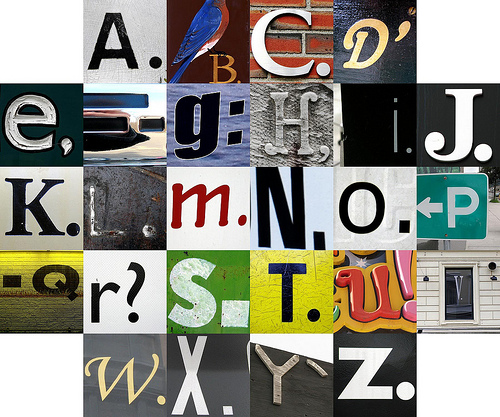BECOME W.I.S.E.R. with Your AI Prompts - A guide for sales managers
Everyone’s wittering on about AI like it’s the second coming. But here’s the rub: if you give it half-baked prompts, you’ll get half-baked answers....


The English Teacher. It’s a universal icon: grey curls, floral frock, pearl necklace, that hairspray smell. Almost all of us had one. And if yours was anything like mine, you learnt a bunch of hard-and-fast rules that were to be as certain as death and taxes. But, they’re not. Sorry Mrs Borland but times r’ a changin’.
Language rules are changing to match online consumption habits. Because we’re always connected and always consuming media we’re becoming progressively more time poor. Reading catchy headlines in an RSS feed or finding a witty Tweet that links us to a handy infographic happens while ordering coffee, fixing our cruddy left earphone and accepting an iCal meeting invite.
Ok. So what?
This process of instant media consumption is likely to define our buyers’ media interaction too. It applies to our blog subscribers, our website users, our ToFu leads and our clients’ potential buyers. Well, every Tom, Dick and Mashable-lover out there. You’ve heard it before (my money is on 30 times today): the content noise.
What’s important for inbound content marketers to know? Generating leads is about effective web copywriting. And online writing has a Cinderella stepsister: grammar.
Mrs Borland would be happy to know that the changes in online language usage and grammar are driven by business objectives and communication goals. They’re respectable and recommended web-writing practices that aim to achieve:
The list, if you ask most web-writing specialists, could be infinite. But what’s important to understand is that…
There’s no time for 32-word Chaucerian sentences, weighty academic headlines, complex sentences or snotty language. No matter your objectives – to establish yourself as a trusted advisor, gain blog subscribers or build brand hype – using engaging language is a must.
This applies to all online content: headlines, web copy, body copy, CTAs, landing pages, Tweets, the works. Er, how do you spell content marketing? Like this: only the fittest content survives. If you don’t believe me, don’t ask Mrs Borland. Just keep reading…
Multiple research papers conclude that more than 85% of B2B buyers believe that they’ve found you. Your language and phraseology is vital to your leads’ interest in your message. After all, the content marketer’s goal is creating remarkable and relevant content. So, here’s how the playground has changed, in our favour:
#1 A phrase is a full sentence. No, but on the web you can use it as one. Really.
#2 And you can begin a sentence with but. Because it’s satisfying for readers. (In case you missed this, it’s ok to start your sentences with ‘and’, ‘but’ and ‘because’.)
#3 Clichés are back – if they’re helpful. (We’re hitting the ground running with our new social media content marketing and, what will be will be.)
#4 Colloquialisms are important – not sloppy. Connecting to your buyers means talking in their language. If they don’t talk about generating inbound leads for SMBs, it’s likely you shouldn’t either. Try: “Getting found online to build business.”
#5 Using nouns as verbs: Googling social media geo-tagging is a must.
#6 Ending sentences with prepositions: Content marketing is the element of inbound marketing that we’re looking into.
#7 To purposefully split infinitives. For effect.
#8 Taking risks to make a p.o.i.n.t. (Breaking punctuation rules deliberately. But there’s a fine line and double exclamation marks are on the wrong side.)
It must be said that online communication and social media marketing don’t allow for whatever grammarian liberties you so fancy (can you hear my thorough-bred BBC accent?).
As far as I’m concerned, certain things won’t ever be fine: the comma splice, the interrobang, emoticons as words, random capitalisation, the dangling modifier, “unsettling” misuse of quotation marks, and every ill-considered semi-colon; Ever.
Traditional grammar rules have their place in B2B marketing: whitepapers, eBooks, print (like brochures and traditional editorials), business proposals, corporate ID docs, etc.
Fundamentally, you’re communicating with your buyers. So understand who they are, how they speak, what interests them, what bothers them, when they’ll engage with it and how. Then work your new literary magic to revamp your great ideas.
For exciting information on your buyers' journey, download your complimentary eBook here:
photo credit: mag3737 via photo pin cc
Subscribe to our latest news and updates on HubSpot.

Everyone’s wittering on about AI like it’s the second coming. But here’s the rub: if you give it half-baked prompts, you’ll get half-baked answers....

The business world is falling head over heels for AI—and who can blame it? With promises to reduce grunt work, uncover insights, and turbocharge...

Search is evolving - fast. For two decades, SEO has revolved around Google’s algorithm: keywords, backlinks, metadata, and page speed. But with the...